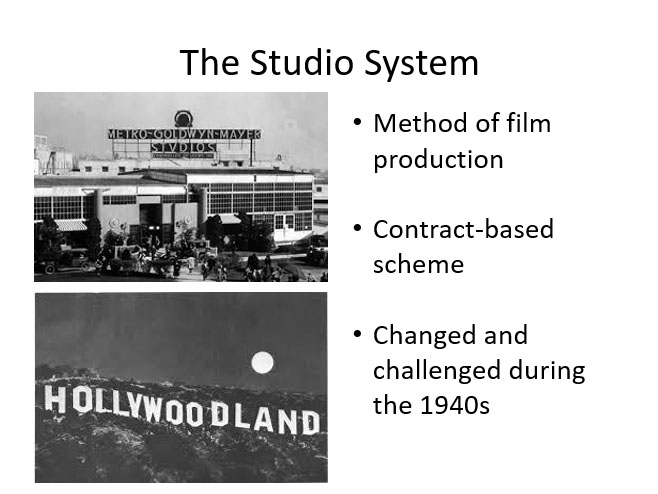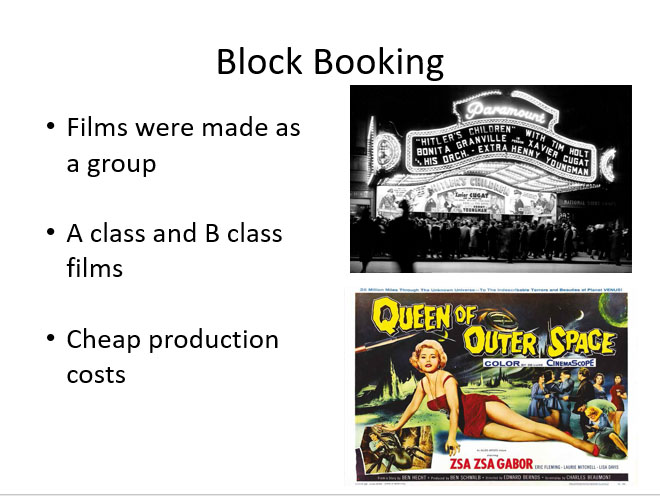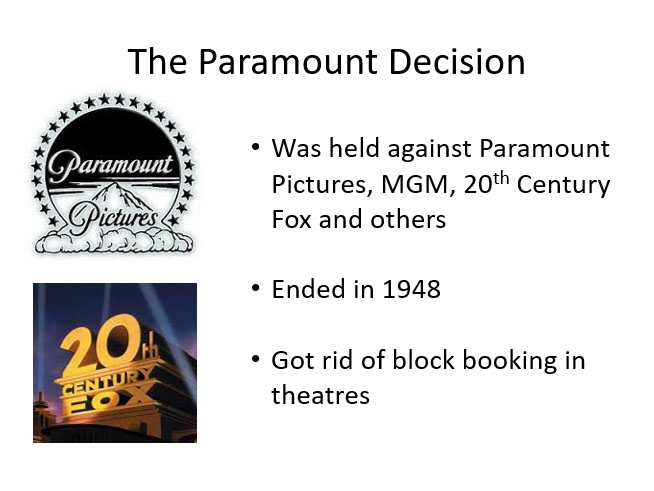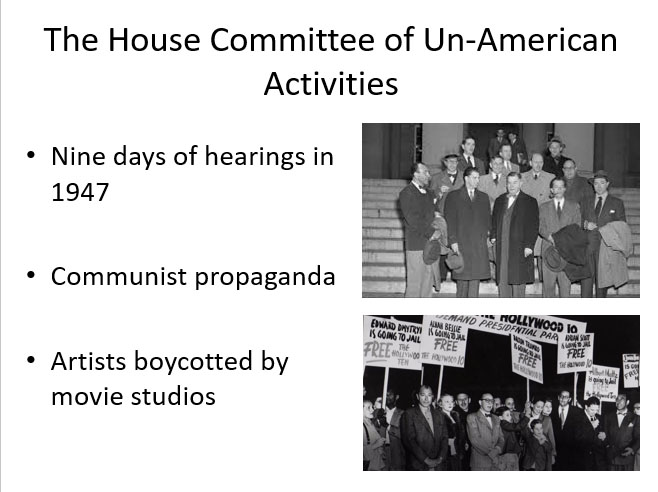| Production Role 1 | Production Role 2 | Production Role 3 – Complete Film | |||
| ROLE | Cinematography | Sound | Editing | ||
| GENRE (SUBGENRE) | Psychological Horror | Family Adventure | Fantasy | Thriller | Chase Thriller |
| MOVEMENT INFLUENCE(S) | Soviet Constructivism | Soviet Constructivism | French New Wave | German Expressionism | Soviet Constructivism |
| PRACTITIONER INFLUENCE (S) | Sergei Eisenstein | Sergei Eisenstein | Jean-Luc Godard | Wes Anderson | Stanley Kubrick |
| TARGET AUDIENCE | Adults | Young adults | Young adults | Adults | Adults |
| PRODUCTION SCALE | Mainstream | Independent | Mainstream | Independent | Independent |
| KEY THEMES/ISSUES | Guilt | Friendship | Discovery | Fear | Escape |
All posts by Erin C
Filters
Cinematography and Editing in Breathless
Breathless (1960, dir. Jean-Luc Godard) is a very influential film, and is an example of French New Wave cinema. At this point in time, there were cinema conventions established by Hollywood. Movies made during the French New Wave era typically didn’t follow these conventions. For example, in Breathless, there are lots of scenes where the characters have meaningless conversations.
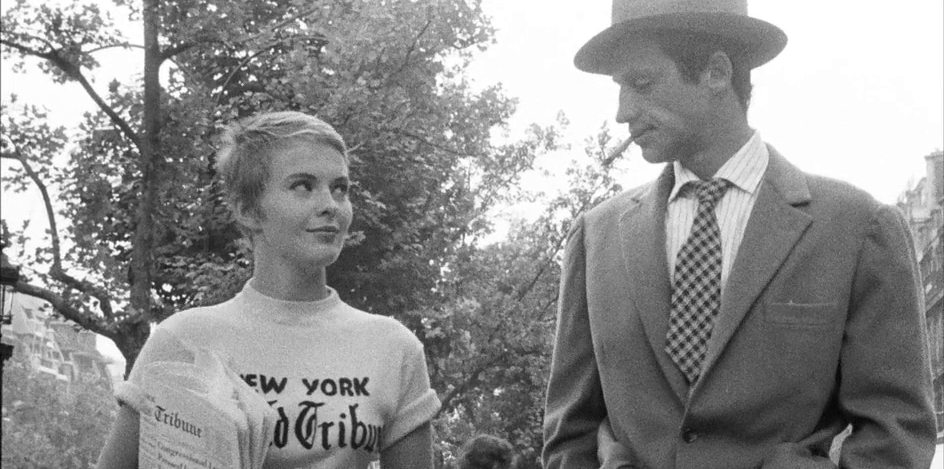
These scenes were sometimes improvised by the actors, and give the film a more natural feel to it. This is different from the mainstream films that were being produced at the time, where everything was very scripted. Audiences were getting bored with these films, which is why films such as Breathless and the French New Wave movement were so successful. These improvised scenes often were made up of long shots and deep focus shots. This allows the audience to interpret the scene how they want, and adds to the more naturalistic feel that it has.
Godard also uses a number of jump cuts in some scenes in Breathless. These shots look unnatural, as they are only slightly different from the previous one. The jump cuts suggest that time has passed since the previous shot, but as Patricia is in the same position it seems unusual.
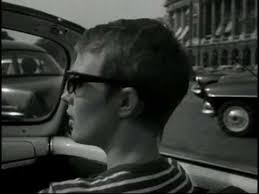
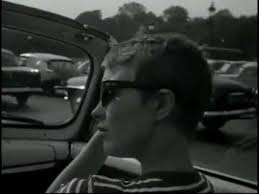
Godard used methods like these in Breathless to remind the audience that they were actually watching a film, and that the scenes weren’t real. This distances the viewer from the story and the characters within it. These shots also seem unusual because while the image is changing and apparently showing different points in time, Michel talks continuously over the top. One other reason for the seemingly random jump cuts was because Godard was told to make the film shorter. This led him to cut parts of scenes out, making them feel like there were parts missing. The jump cuts weren’t originally intended during filming, but Godard’s style later was called innovative.
One feature of French New Wave Cinema is an emphasis on having realistic mise-en-scene. Breathless was filmed in real locations, and had no sets constructed for it. This led to the film having a very naturalistic look and feel to it. Godard’s decision to film in this way led to the film presenting a more realistic view of the world, rather than it being over-stylised, which previous films were.

The final scene of the movie was shot in a real Paris street, rather than constructing a set. This saved the crew precious time and money, as they had a relatively low budget. Again, this is what makes Breathless different from other mainstream films, as elaborate sets weren’t needed. In addition, the ending of the film is different from what audiences would have expected to see. During the ‘golden age of Hollywood’, audiences had become used to films where the protagonist was a hero and makes the right decisions. However, Michel dies at the end of Breathless, changing the expectation for the protagonist to survive, and for them to always be the hero.
Breathless was Godard’s first film. Before he became a director, he wrote for a magazine called Cahiers du Cinéma, which analysed and criticised films. Through this magazine, which he co-wrote with François Truffaut, he developed the auteur theory which suggests that the director of a film is the real writer, rather than the person who wrote the screenplay. This is because elements such as camera placement and lighting are chosen by the director, and convey the main message of the film. This could be why Breathless has such a personal and everyday feel to it, because Godard focused on using mainly the mise-en-scene to tell the story.
Godard’s style can be seen in modern-day movies, as his influence has reached a lot of mainstream cinema. For example, Pulp Fiction (dir. Quentin Tarintino, 1994) uses lots of seemingly random cuts, which is a style of Godard’s. This editing adds tension and action to the scenes. Also, some scenes in Pulp Fiction are random and not important to the whole plot, for example when two characters are talking. This adds a sense of verisimilitude to the film, and is something that was developed in French New Wave cinema.
Montage in Strike
Strike (1925, dir. Serge Eisenstein) was a silent film, and Eisenstein’s first feature length film. It was made during the rise of the Soviet Union, and features different Soviet montage techniques, which were used by Eisenstein to tell the worker’s story. Eisenstein’s innovative editing and montage techniques are inspired from when he was at VGIK, a film school in Moscow. At this time, there was very little raw film stock in Russia, so new films couldn’t be made. Instead, people focused on studying films. They would cut up existing film reels and find out what different effects were created by editing scenes together in certain ways. This led Eisenstein to come up with his five methods of montage: rhythmic, metric, tonal, over-tonal and the intellectual method.
One use of method of montage used was metric editing, where the lengths of shots create the tempo of the scene. This is used near the beginning of the film, where the strike is being organised.


Here, the shot quickly cuts between the faces of the different workers in the factory. Each shot lasts around a second, which isn’t a long time for the audience to process what they’re being shown. The quickly cut shots increase the tempo of the scene, which adds a sense of panic and mayhem to the action. It helps the audience to understand what is going on, as it makes them understand the danger and the urgency that the workers are feeling.
Strike also uses the intellectual method of editing in a number of scenes. For example, when the agents are introduced, the scene cuts from pictures of animals to pictures of their faces, showing their code names. This clearly shows the audience which character is which, and emphasises how their personalities reflect the animals that they are named after.


Here, the shot changes from an image of an owl to the character of The Owl. His actions, for example rubbing his eyes and blinking a lot, are similar to what people would expect to see an owl doing. The shots fade together, making to comparison between the two obvious for the audience.
Another example of intellectual editing is near the end of the film, where the attack on the workers is shown alongside the slaughtering of a cow.


These two unrelated images create a sense that the workers are being massacred, and that they are innocent compared to the cruel and powerful soldiers. It helps the audience sympathise with the people, as the horrific image of the cow isn’t what audiences would have expected to see during the film. It also shows the relentless brutality of the soldiers, and how the workers are treated as though they are just cattle.
Eisenstein’s montage techniques has influenced many aspects of modern day cinema. For example, the series of Rocky films each feature a ‘training montage’, which are clearly inspired by Soviet montage techniques. Music videos are also based on Eisenstein’s idea of rhythmic montage, as shots tend to cut in time to the music playing.
Micro Elements in The Cabinet of Dr Caligari
The Cabinet of Dr Caligari (1920, dir. Robert Weine) is a silent horror film that was made in Germany by an independent studio called Decla. At this time in Germany, most film studios were owned by the massive company UFA, but Decla weren’t. The Cabinet of Dr Caligari went on to influence many other films, including the genre of film noir in Hollywood during the 50s and 60s, and some films in modern-day cinema.
In The Cabinet of Dr Caligari, the editing effect of an iris wipe is used frequently. This is done by slowly closing the iris of a camera, before sliding a piece of card over it to make the shot cut to black.

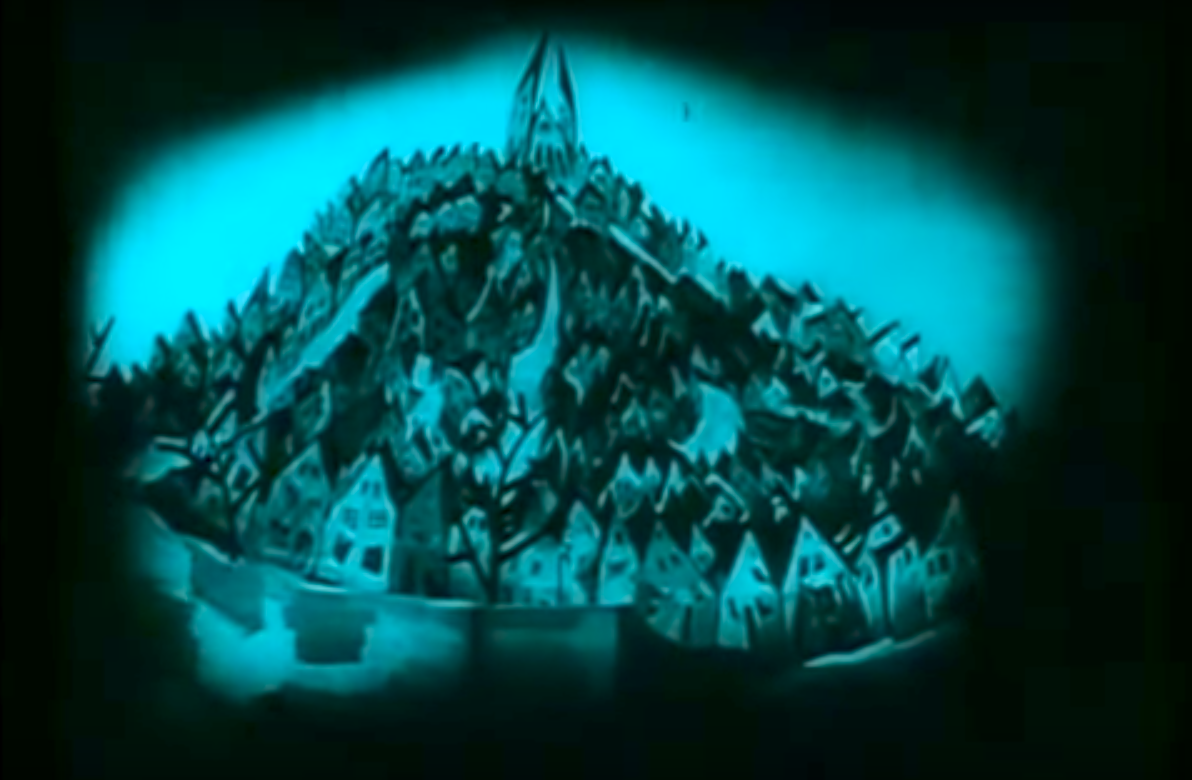
This is an editing technique that was commonly used in silent films such as this one. In this shot, it is being used when Francis tells the story of the fair through a flashback. The iris cut emphasises the fact that it is a flashback, as it creates a sort of dreamlike feel to it. There isn’t a lot of intercutting in this film, which is because to join together scenes, the film had to be manually glued together. This, along with the small sets used, makes the film feel quite like a theater play, rather than a film.
The Cabinet of Dr Caligari was made entirely on sets, with no outside shots. This means that no natural lighting was used, so they lit the sets artificially. However, as the studio Decla was outside the control of UFA, they had limited resources, such as electricity for lighting. To help with this, they painted strips of light and darkness onto the sets, to create the impression of shadows.


In this scene, it is clear to see where light sections have been painted on the floor. This reflects the genre of the film, as it was made during the period of German Expressionism. One feature of this is distorted landscapes, which is reflected in this shot of the street. In addition, the window and the walls of the set have been slanted, making the set look confusing. This again reflects the context of German Expressionism, but also foreshadows at the twist at the end, where it is revealed that it is all a story of a mental patient. The warped set makes the audience experience the world as the insane Francis does. The Cabinet of Dr Caligari made a cinematographic breakthrough, in terms of introducing the idea of a twist ending and an unreliable narrator.
The makeup in this film is also very detailed, but also very dramatic. As it is a silent film, Weine had to find different ways of expressing characters’ emotions to the audience, as they weren’t able to talk.


This is the scene where Cesare is first revealed to the audience. This close up allows his face to be seen very clearly, and it emphasises the dramatic makeup that he’s wearing. The heavy dark eyes and lips could have been used to reflect Cesare’s thoughts and what is happening in his mind. His makeup and costume is meant to be slightly creepy, establishing him as a main villain for the audience.
Cesare’s character could be referencing some of the soldiers that had come out of World War 1, as they were shell-shocked and unable to carry on life as normal. The creators of The Cabinet of Dr Caligari – Hans Janowitz and Carl Mayer – were pacifists, and the script was inspired by some of the events of their lives. They could have intended the film to be showing how traumatic experiences can dramatically change a person, which they have shown in the film through the use of extreme makeup and distorted sets and mise-en-scene. However, eventually, The Cabinet of Dr Caligari went on to set the theme for German cinema throughout the rest of the Weimar period, where mise-en-scene was used in an expressionistic way, rather than realistically.
Why is Citizen Kane ‘The Greatest Film Ever Made’?
There are a number of factors in Citizen Kane (1941, dir. Orson Welles) that cause many critics to consider it the greatest film of all time. It has come at the top of the AFI’s Top 100 Movie’s list in both 1998 and 2007. During the production of Citizen Kane, a number of new cinematic ideas were developed and used, for example Gregg Toland’s deep focus lens, which allowed everything in the scene to be in focus all at once. His innovative use of the lens allowed the film to have different impacts on the audience’s perspective of things, for example in this scene:


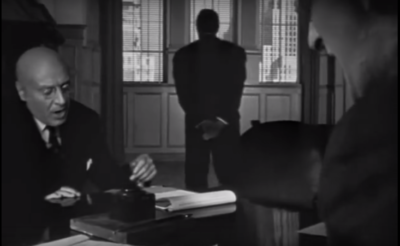
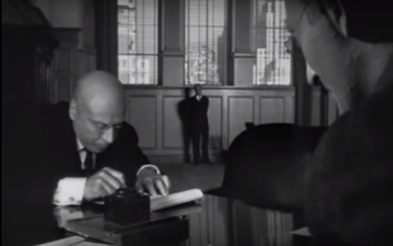
Here, Kane looks to be the same size as the window, but as he walks towards it he is dwarfed by its immense size. When Welles was designing scenes like these, he wasn’t aware that having everything in focus all at the same time wasn’t really possible yet. As he’d previously worked in theater, he asked Toland to find a way to do this, which led to his invention of the deep focus lens. This is just one use of the lens, and there are many different ways in which the camera was also used innovatively throughout the film.
Another aspect of Citizen Kane that helps it to be considered the greatest film is the use of makeup. It is used in a very clever way through the film, as the actors were playing the same characters but at different stages in their lives. The makeup artist, Maurice Seiderman, uses makeup subtly to show the characters aging, for example in the breakfast table scene with Kane and his first wife Emily.


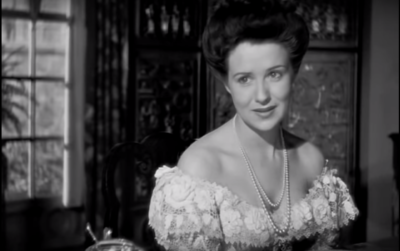

At the beginning of this scene, both characters look young as it is early in their marriage. As the scene progresses, they start to look older, but the change isn’t really noticeable until the end:


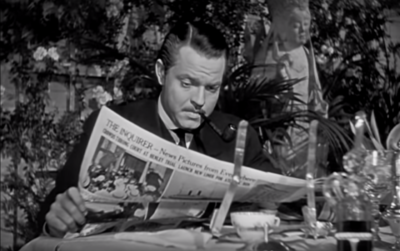
This is a very clever use of makeup, as it quickly condenses years of their marriage into a couple of minutes. At the time that the movie was made, makeup was often unconvincing and unrealistic, but Seiderman managed to make it look natural on all of the characters. He came up with his own makeup and techniques that were more comfortable for the actors to wear, and looked like real life. Sometimes, the actors had to spend five or six hours in the makeup chair, but the end product made up for it. In some ways, Seiderman’s use of makeup influenced other films that followed.
The plot behind Citizen Kane also is a factor that makes it a very popular film. At the time, it was based on the newspaper publisher and politician William Randolph Hearst, which was very controversial. The consequences that the movie faced at the time greatly affected its reception, but now it has grown in popularity. One reason for this could be because of its relevance in today’s society, with the rise of Donald Trump. The character of Charles Foster Kane is very similar to him, and to many other people in positions of power. This could be why Citizen Kane is widely considered the greatest film of all time.
Micro Elements in Citizen Kane
In my opinion, this scene from Citizen Kane (1941, dir. Orson Welles) has a wide range of different micro elements, which work together to create a subtle but overall very incredible effect. It is a scene from towards the beginning of the film, where Kane’s childhood is partially explained to the audience.
This scene begins with a fade from the text that is being read to Kane as a young boy playing in the snow. Firstly, this is helpful to the audience as it focuses on the sentence ‘I first met Mr Kane in 1871.’ before fading into the snowy scene, which helps them to understand the context. In addition, the slightly tense music that is playing at the beginning smoothly changes into a happier tone, creating a Christmas feel. This makes the transition between the two shots seem smoother, and helps to immerse the audience in the winter scene.
This scene also features a long take, from 0:26 to 2:06. It begins with the camera zooming out through the window from the shot of Kane playing in the snow. The camera then continues to move backwards through the room, stopping at the end of a table. However, for this take to be possible, the camera must have passed through the table. To solve this problem, the cinematographer for Citizen Kane, Gregg Toland, came up with a table that would split in half to allow the camera to pass through, then quickly attach back together in time for the shot. This was an incredibly innovative idea, as it immerses the audience within the scene and creates a high sense of verisimilitude.
The use of a deep focus lens in this scene is also significant in the message that it portrays. For example, here everything in the scene is in focus, so the audience aren’t quite sure on what they should focus on – the signing of the paperwork in the foreground or Kane playing in the snow in the background.

The deep focus shot causes the emphasis on characters to be drawn from their actions and movements, rather than them just being in focus. The fact that Mrs Kane is in the foreground suggests that she is holding the power in this scene, as she is in control of young Kane’s future. Kane is also in focus because of the lens, and he is shown to be playing happily in the snow. The mood of his actions contrast the atmosphere inside the room, which emphasises to the audience how much this deal will affect his life.
The lighting used in this scene is subtle, but still creates an effect. Compared to some other scenes in the film, it isn’t used as heavily here, but the bright lighting could be suggesting how Kane’s childhood was a happy time where he didn’t have to worry much. As the film progresses, the scenes become darker, which could be showing how his life is going downhill – especially towards the end when his wife leaves him and he’s left in Xanadu all alone. In addition, Mrs Kane is in slightly brighter lighting than Mr Kane, again implying that she holds all the power over the boy’s future.
At the end of this scene, the camera eventually switches from using medium shots to a close up of Mrs Kane and Kane’s faces. These shots are some of the only close-ups used in the film, and they help the audience to clearly see the emotions in the characters’ faces. It helps the audience to realise how much Kane doesn’t want to go and live with Mr Thatcher, and it makes them sympathise with the young boy.
The Production of Citizen Kane
Citizen Kane (dir. Orson Welles, 1941) is widely considered the greatest film ever made. The production context behind this film greatly influenced the end look and feel of this film.
Welles came into the fame after his radio broadcast of War of the Worlds in 1938. This led to the Hollywood studio RKO hiring him to make a film, which they ultimately gave him complete creative control over. This was practically unheard of in Hollywood, and meant that the film was exactly what Welles wanted it to be, as long as it stayed under the budget of $500,000. Welles’ history working in the theater influenced the film to look like a stage production in some ways. In addition, the cast were part of Welles’ theater group, so they were trained to act on stage, rather than on-screen.
There were a number of new inventions that made Citizen Kane an incredible film. The cinematographer, Gregg Toland, made use of a new deep focus lens, which allowed everything in the scene to be in focus all at once. This very effective in some scenes, because it creates optical illusions that change the way audience see some things. For example, in the shot below, Kane seems to be the same size as the window, but as he walks towards it, he is dwarfed by its size. This is reflects how Kane is becoming smaller as he loses his power and influence. Inventions like this one, and the use of them throughout Citizen Kane, make the film very innovative.


Citizen Kane is famously based on the life of William Randolph Hearst, an American businessman, politician and newspaper publisher. While Welles denied these accusations, Hearst used his immense power and influence to limit the amount of theaters where Citizen Kane could be shown. This led to the film failing at the box office, and Welles’ career being seriously harmed. However, the character of Kane – a prominent newspaper owner who tries to start a career in politics – reflects Hearst’s life in many ways. As Hearst was an easily recognisable figure for the audience, Welles’ portrayal of him led to the boycotting of the film. It wasn’t until 1956 when Citizen Kane was revived, that the film received the recognition that it deserved.
1940’s Hollywood
The Studio System
The Studio System was a method of film production used by major Hollywood studios from the 1920s to the end of the 1940s. It was a contract based scheme, so the same people would be employed for movies, rather than finding new people based on talent. During the 1940s, the studio system was changed due to a number of reasons, and a court case was brought up against it, called the Paramount Decision. This, among other reasons, made the studio system come to an end.
Block Booking
Block Booking was a technique that supported the Studio System and helped it to earn millions of dollars. It was when films would be made in a group, usually a bundle of five, and sold to a theatre together so all five would be shown. Film companies owned specific theatres, so only movies shown by that company would be shown there. These movies would typically be one high quality film, an A class film and then a few B class movies. This meant that movie companies could spent little money of producing cheap, B class movies, but still make lots of profit on them as theatres has to show them because of the block booking.
What Ended The Studio System?
There are four main factors that brought around the end of the Studio System. One of these was the Paramount Decision, which reduced the number of films that were being produced. Also, post-war changes in society meant that people didn’t want to see the same sort of films as before, forcing the studios to change. The rise of television meant that less people were going to the cinema or theatres, and the House Committee of Un-American Activities blacklisted many companies and artists in the film industry.
The Paramount Decision
The Paramount Decision was a turning point for movie studios, and it was partly responsible for the end of the old Hollywood Studio System. It was a case in the US Supreme Court that was held against the major movie studios of the time, with Paramount as the main defendant. Other studios involved were MGM, Warner Bros, 20th Century Fox, RKO Pictures, Universal Studios, Columbia Pictures and United Artists. The movie studios were accused of violating the antitrust laws when the distributed their films. When the case ended in 1948, the verdict was against the movie studios, which forced them to get rid of their theatre chains. They were also forbidden to block book movies, or to sell them to theatres without giving the managers a screening first. This was a major factor causing the end of the Studio System.
The House Committee of Un-American Activities
The House Committe of Un-American Activities held nine days of hearings in 1947 about the Hollywood movie industry, claiming that they were producing communist propaganda. Ten individuals were blacklisted after they refused to answer questions in front of the committee. These people became known as ‘The Hollywood Ten’. They went on to blacklist many others, and more than 300 people were boycotted by studios due to their connections with communist propaganda. Only around 10% of these people could rebuild their careers after this, which led to a dramatic decline in the number of moves that were created during this time.
Sound in Dunkirk
Dunkirk (dir. Christopher Nolan, 2017) is a historical drama/thriller about the British evacuation from Dunkirk during World War Two. The film follows three story lines of three different perspectives of the evacuation – one lasting a week, one a day and one an hour.
https://www.youtube.com/watch?v=1Ml0r-5U3lw
This is the final dog fight scene from the film, where the three different story lines come together during the actual evacuation from the beach. This scene begins by focusing on Farrier in his plane, flying over the beach. The dominant sound at this point is the diegetic sound of the Spitfire’s engines and the propellers spinning. Nolan wanted the sounds of the Spitfires to be authentic, to add to the verisimilitude of the film. During post production, real Spitfire engine noises were added to make the film as historically accurate as possible.
As the sound of the engine dies out, the noises of the propeller and the wind become louder. This signals the moment when Farrier finally runs out of fuel. These diegetic sounds are emphasised as it helps the audience to imagine the situation inside the cockpit, and how the pilot is feeling as he begins to lose control of the plane. Again, this adds to the believability of the film, as these sounds are realistic and it is easy for the audience to imagine that it they really happened.
Beneath all of these sounds, there is a Shepard’s Tone playing. This non-diegetic sound is created by having three octaves that increase in pitch at different speeds. It creates a sense that the music’s pitch is always increasing. During this scene, it adds tension to the action, as it makes it seem like time is running out for Farrier. The Shepard’s Tone is accompanied by a quiet ticking noise, which is a repeating motif throughout the film. This again adds a sense of desperation for the audience, as it makes them even more aware at how little time is left for him in the plane before he crashes.
This Shepard’s Tone is continued for a while through the scene. At the moment where the civilian ships arrive and Commander Bolton is happily talking to the soldiers and nurses, it can still be heard. This makes the audience uneasy, as it suggests that there is still something important to happen. However, as this is a non-diegetic sound, meaning that it doesn’t exist in the world of the film, the characters seem completely unaware of the danger that they still could be facing. However, this scene also features the Nimrod music piece, which reflects the mood of the characters as it sets a joyful, victorious tone.
Towards the end of the scene, a happier score is introduced, just after the German plane is shot down. This music creates a sense of victory and British pride, as it comes at a moment where it seems like everything is going to be alright for the British soldiers. The music starts at the same time as the diegetic sound of the soldiers on the beach below cheering, again making the audience feel a sense of relief as the German plane was defeated. This non-diegetic music also contrasts the darker scores that were heard before in the scene and in the rest of the film, making it feel as if this scene is the climax of the film with a happy ending.
Sound Mixing and Sound Editing
Sound editing involves all of the film’s sound effects, including dialogue and sound effects. The job of the sound editor is to edit all of the audio of the film together after it has been recorded. On the other hand, the job of the sound mixer is to decide which elements of the sound to emphasise, and which to tone down. Sound mixing determines how the audience will eventually hear the film.

